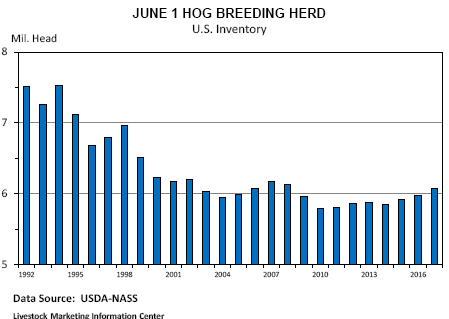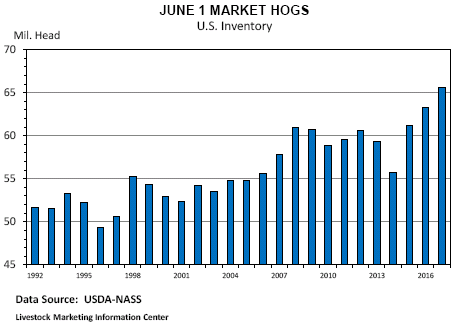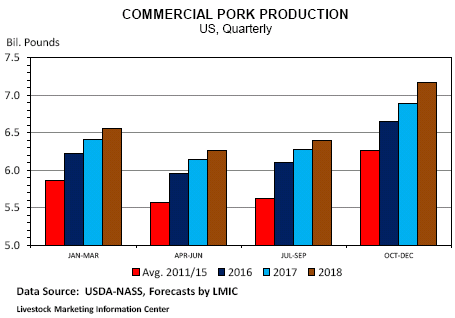



CME: More Hogs and Pigs Than Mid-point of Expectations
US - USDA’s National Agricultural Statistics Service (NASS) released their Quarterly 'Hogs and Pigs' report yesterday, reports Steiner Consulting Group, DLR Division, Inc.Compared to pre-report estimates, there were more hogs and pigs than the mid-point of expectations, but numbers were within the range. Based on the report, US pork production will continue to post year-over-year increases for at least several more quarters.
NASS made only slight revisions to numbers released in prior reports. Using the unadjusted numbers, the average of the pre-report estimates put the national total inventory of hogs and pigs at about 7.50 million head as of June 1st, the report came in at 7.65 million.
In percentage terms, year-over-year as of 1 June, the all hogs and pigs count increased 3.4 per cent, animals kept for breeding purposes was up 1.5 per cent, and market hogs rose 3.6 per cent to 65.58 million head. Productivity, as measured by pigs weaned per litter, continued its recent trend of year-over-year increases (up 1.1 per cent).


As in recent quarters, NASS has estimated from their producer surveys that farrowing intentions for the next two quarters will see a moderating growth rate. However, those statistics have been rather consistently revised higher in subsequent quarters. In yesterday’s report, intended farrowing’s for both the June-August and September-November production quarters were only slightly above 2016’s (up less than 1 per cent).
The Livestock Marketing Information Center raised their quarterly US pork production forecasts slightly based on the latest NASS report (see graphic below for the latest update). Readers should note that compared to a year ago recent production increases have been moderated by lower Federally Inspected barrow and gilt carcass weights.

In May, those weights dropped 2 pounds year-over-year, a trend has continued into June (latest USDA data is for the week ending 17 June). Those weight trends are incorporated in the quarterly production graphic.








